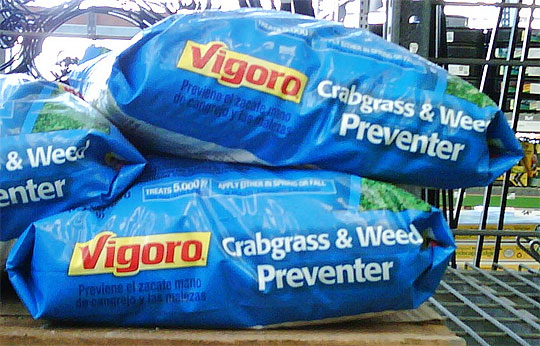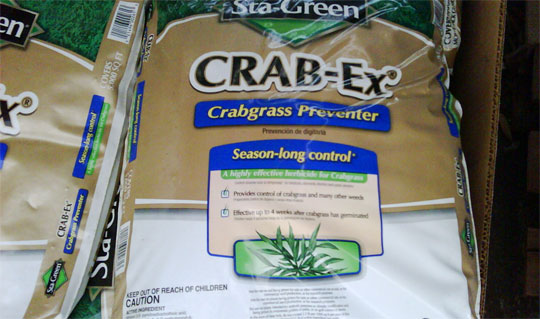Weekend Gardening: Tackle Existing Weeds And Build A Lawn Defense
February 11, 2012
 Just look around and you will probably notice a lot of green lawns. But, its early February, shouldn’t the lawns be brown?
Just look around and you will probably notice a lot of green lawns. But, its early February, shouldn’t the lawns be brown?
Winter weeds are creating a field of green in many local lawns. Vetch, chickweed, annual bluegrass, henbit and clovers are growing rampantly in many lawns. Unless you do something about these weeds now, your weed problem will only get worse. February is the time to take the offensive against lawn weeds.
Grow a Healthy Lawn
The first and best method of weed control begins with proper management practices that encourage a dense, thriving turf. Healthy turf shades the soil so sunlight can’t reach weed seeds that are ready to germinate. A thick turf also minimizes the physical space available for weeds to become established. Proper mowing, fertilizing and watering will promote a healthy, dense grass.
Control existing winter weeds by either hand-pulling or treating with post-emergence herbicides. Be sure to choose herbicides that will control the weeds you have and will be safe to use on the type of lawn grass you grow. It’s best to spot treat the weeds, if possible. Since most people have temporarily stored their lawn mowers, the winter weeds have ample leaf area to absorb the herbicide for effective control.
For help choosing the right product, contact your local Extension Office. They may ask for samples of the weeds to ensure that you have identified them properly.
Prevent Future Weeds
Now is also the time to apply pre-emergence herbicides to prevent annual summer weeds, such as crabgrass, spurges, etc., from infesting the lawn through the spring and summer.
Pre-emergence herbicides must be applied prior to weed seed germination. Applications should be between February 15 and March 5 or when day temperatures reach 65° to 70°F for four to five consecutive days. This generally coincides with the blooming of azaleas and dogwoods.
Pre-emergence herbicides work by creating a chemical barrier in the soil/thatch layer. Therefore, uniform coverage is necessary for optimum control. Large gaps in the herbicide-treated zone can result in weeds popping up.
Pre-emergence herbicides are generally effective in controlling weeds from six to twelve weeks following application. Most will begin to degrade when exposed to the environment. Therefore, to obtain season-long control, an additional application should follow six to nine weeks after the initial one.
 Some pre-emergence herbicides to look for include dithiopyr (Sta-Green Crab-Ex or Vigoro Crabgrass & Weed Preventer) or pendimethalin (Lesco PRE-M or Scotts Halts).
Some pre-emergence herbicides to look for include dithiopyr (Sta-Green Crab-Ex or Vigoro Crabgrass & Weed Preventer) or pendimethalin (Lesco PRE-M or Scotts Halts).
With any pesticide, you should always READ THE LABEL carefully and completely before applying. The herbicide label will provide a list of where it can safely be applied and the weed species the active ingredient will control and at what rate.
What about Fertilizer?
It is still too early to apply a nitrogen-containing fertilizer on our mostly dormant lawns in Northwest Florida. Adding nitrogen now fertilizes your existing weeds. It may also stimulate the grass which makes it more susceptible to winter kill when/if we get our next cold snap. In general, it’s best to apply your herbicides separately from fertilizers.
Wait until April to fertilize your lawn or until you’ve mowed twice because of grass growth. In the meantime, get a soil test done so that you will have a better idea of the type of fertilizer to use.
Theresa Friday is the Residential Horticulture Extension Agent for Santa Rosa County.
Comments
2 Responses to “Weekend Gardening: Tackle Existing Weeds And Build A Lawn Defense”




Thank you very much for providing this type information. Keep up the good Work.
Thank you for the helpful tips……….. all have weeds